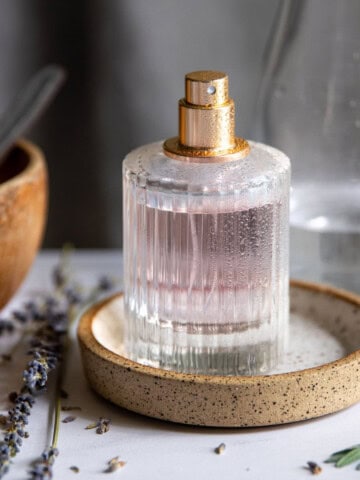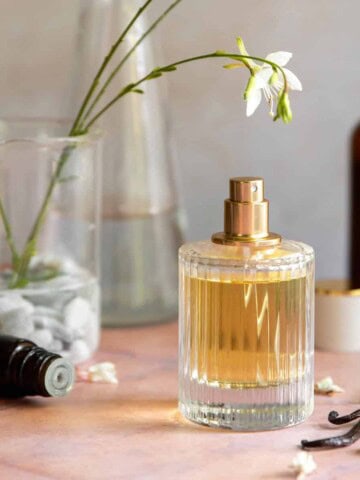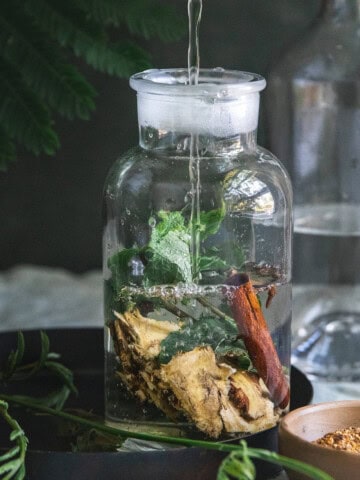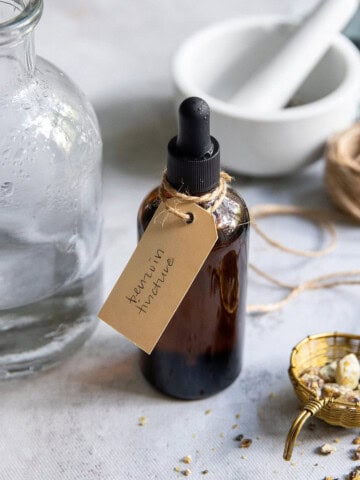Easy-to-make vanilla essential oil perfume requires just a handful of ingredients and offers an uplifting scent anytime, anywhere, and without headaches! Not to mention, there are a bunch of different ways to make it, so you can choose the method that works for you and your budget. Read on and we'll show you 5 different methods to make vanilla perfume.
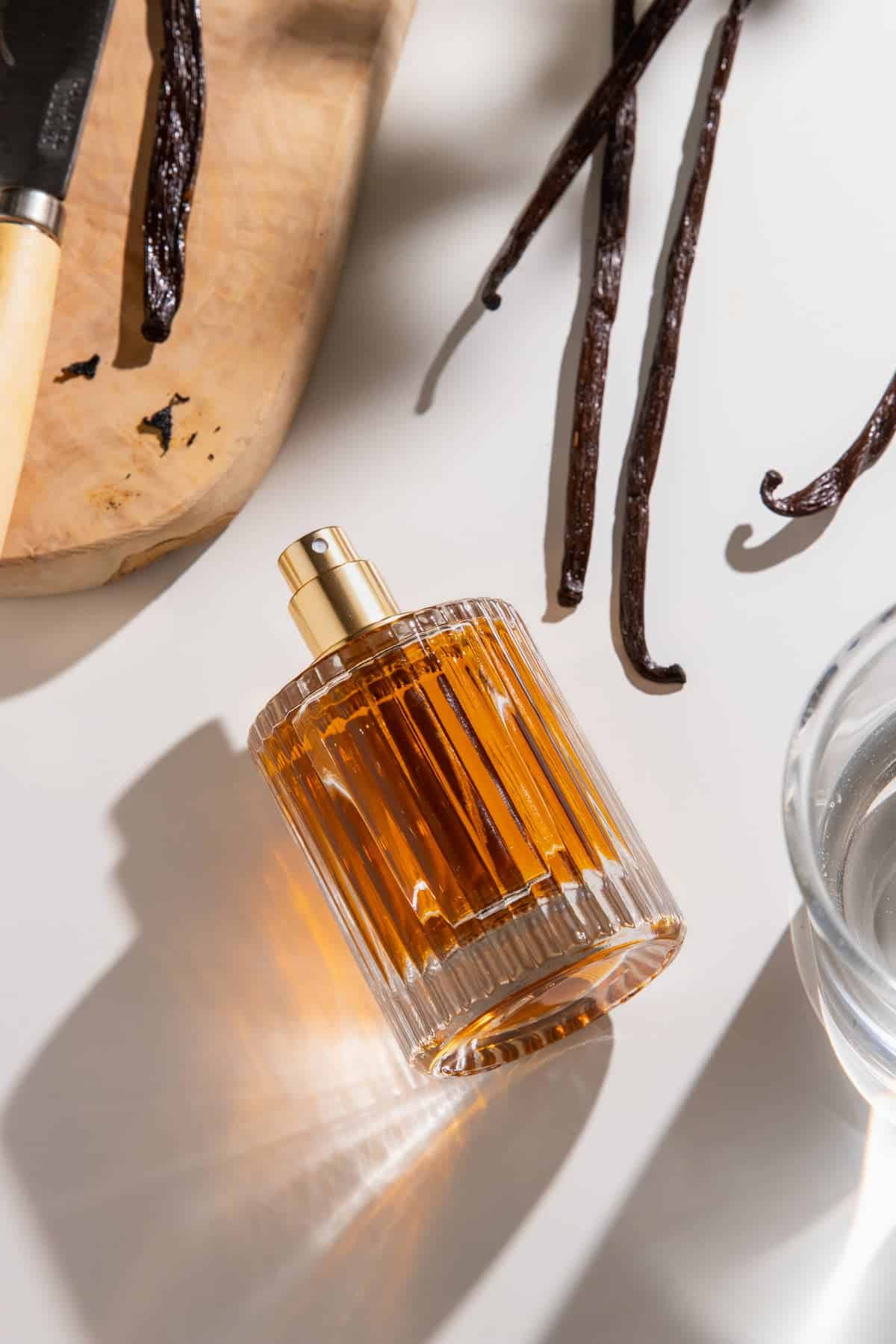
Perfumes used to intimidate me. Walking through any store’s fragrance aisle had me overwhelmed in minutes, and after sniffing a few possibilities, I’d give up because the headache hit and they all started smelling the same.
But once I discovered that I could make my own perfume, things changed. I can choose my own scent combination, adjust the intensity of the fragrance, and even experiment with the look and feel.
Jump to:
1. Infused Vanilla Bean Perfume
If you're sensitive or even allergic to fragrances, most perfumes are simply a no-go. But this perfume is lightly scented with simple ingredients that you can adjust to your level of sensitivity.

As an aromatherapy duo, the sweet sandalwood and warm vanilla offer a naturally calming, anxiety-easing aroma. Just the thing to reapply throughout the day or whenever you're feeling stressed!
- 3 whole vanilla beans
- 2 tablespoon jojoba oil (or another carrier oil, such as sweet almond, argan, or fractionated coconut oil)
- 30-40 drops sandalwood essential oil (any essential oil will work here, or leave it out entirely, if you prefer)
Instructions
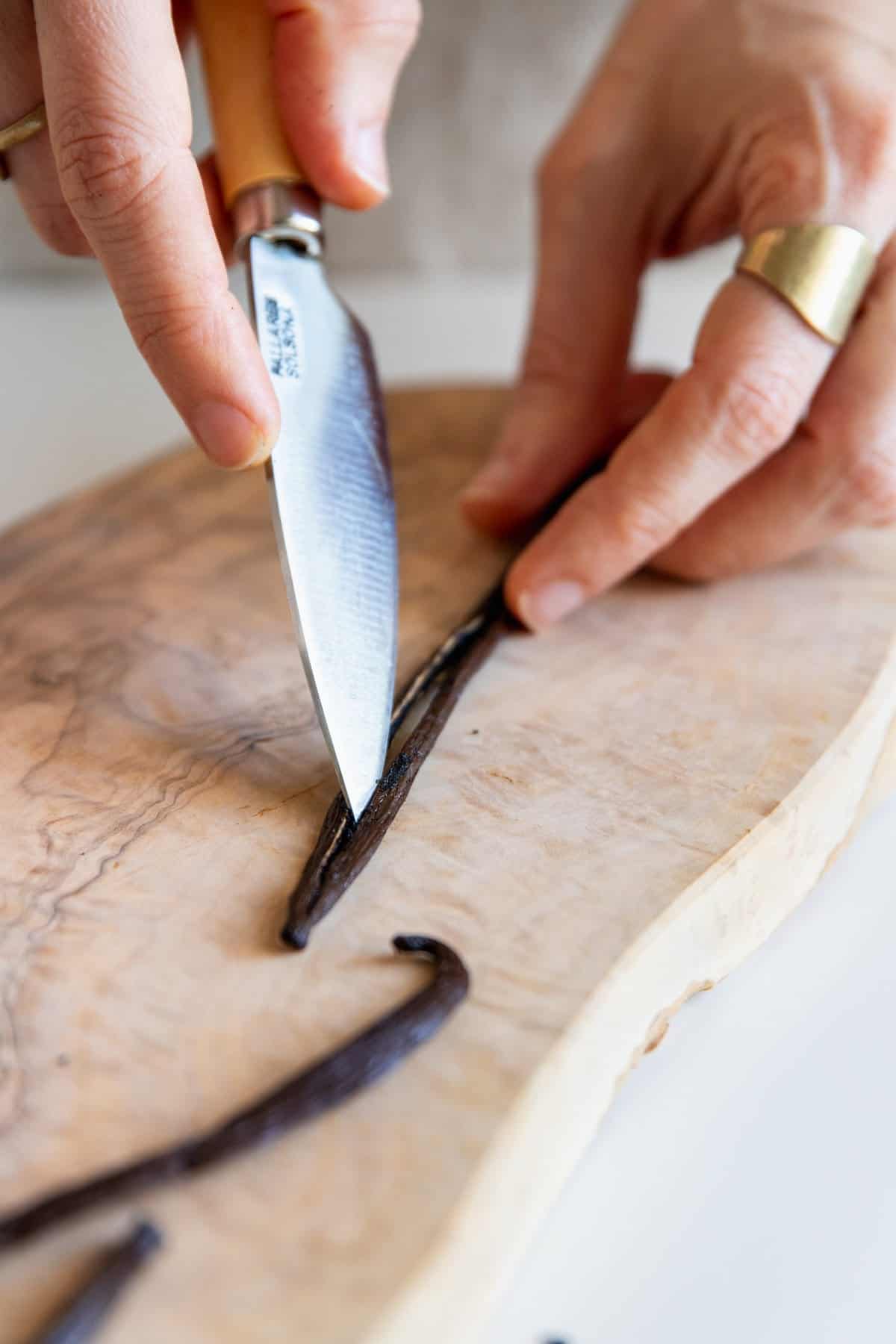
Step 1 | Split and scrape the vanilla beans
Use a sharp knife to make a lengthwise cut along the bean, exposing the seeds.
Then, use the back of the knife or a spoon to gently scrape out the seeds from the inside of the bean. Place the seeds in an airtight glass jar.

Step 2 | Infuse in carrier oil
Heat the jojoba oil until slightly warm (you can do this either on the stove or in the microwave, just make sure to check the temperature often). Pour the warm oil over the vanilla bean, seal the jar, and let the infusion sit in a cool, dark place for at least a week. Shake the jar occasionally.
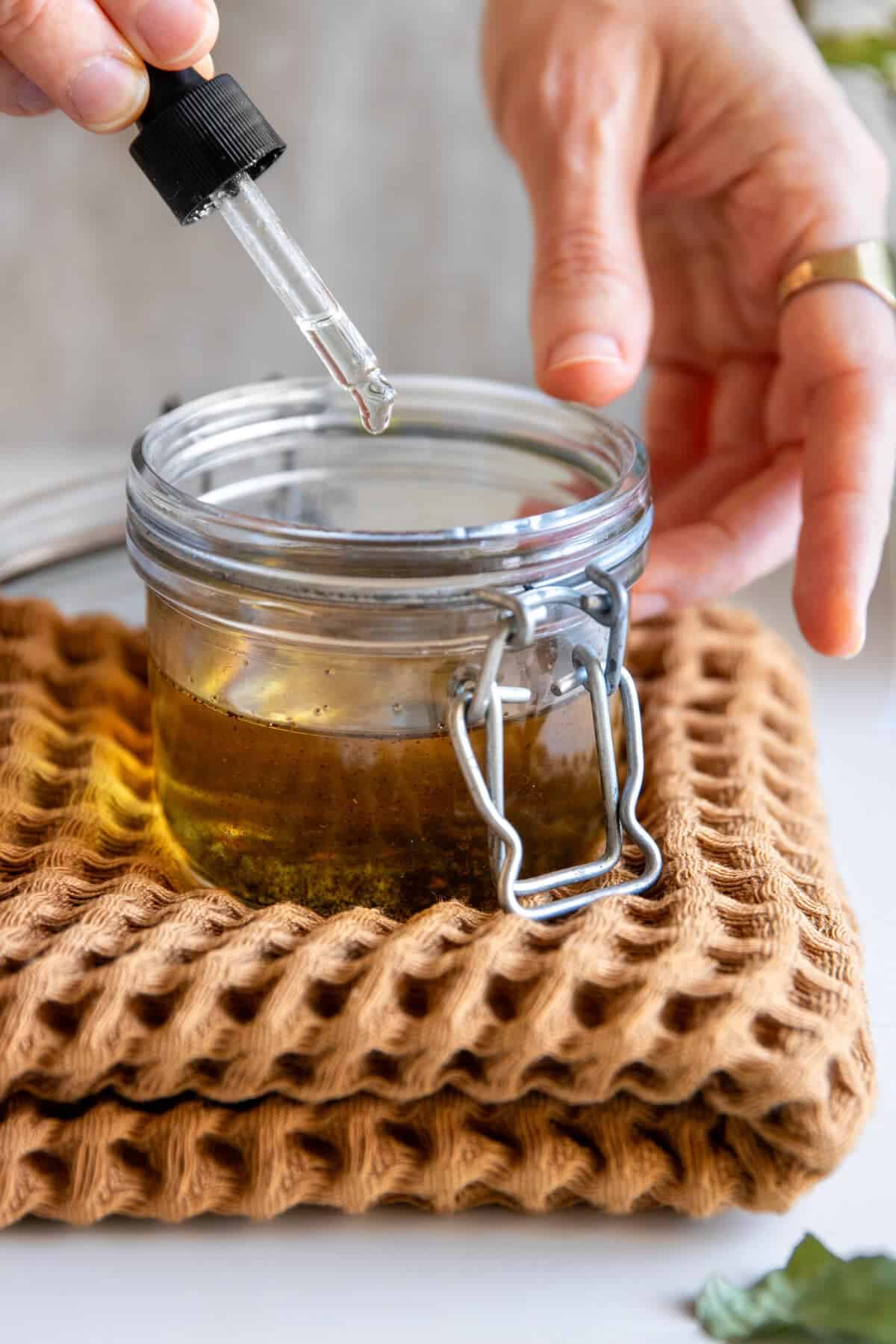
Step 3 | Add essential oil
After a week, test the infused oil to see if the scent is as strong as you'd like. If not, let it steep for a few more days.
If it is strong enough, add your essential oil and swirl to combine. Let steep overnight to give the scent time to develop.
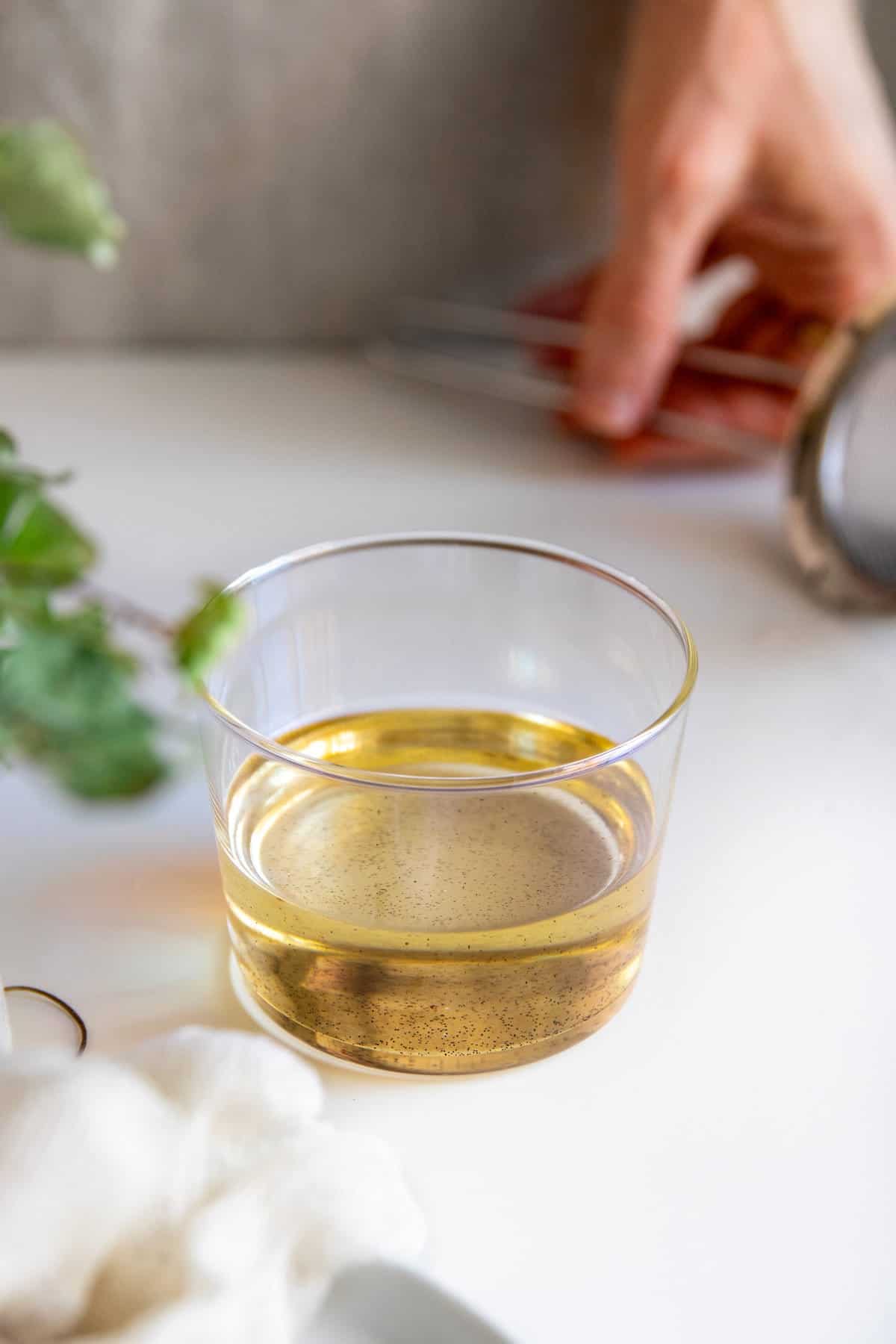
Step 4 | Strain out vanilla bean seeds
Using a few layers of cheesecloth stacked inside a mesh strainer, strain out the vanilla bean seeds. If you can't get all the seeds out just remove as many as you can and don't worry about the rest. Transfer the perfume to an airtight glass bottle and store it in a cool, dry place.
2. Vanilla Essential Oil Cologne
Since it's made with high-proof alcohol and oils, this recipe makes for a more "traditional" perfume.
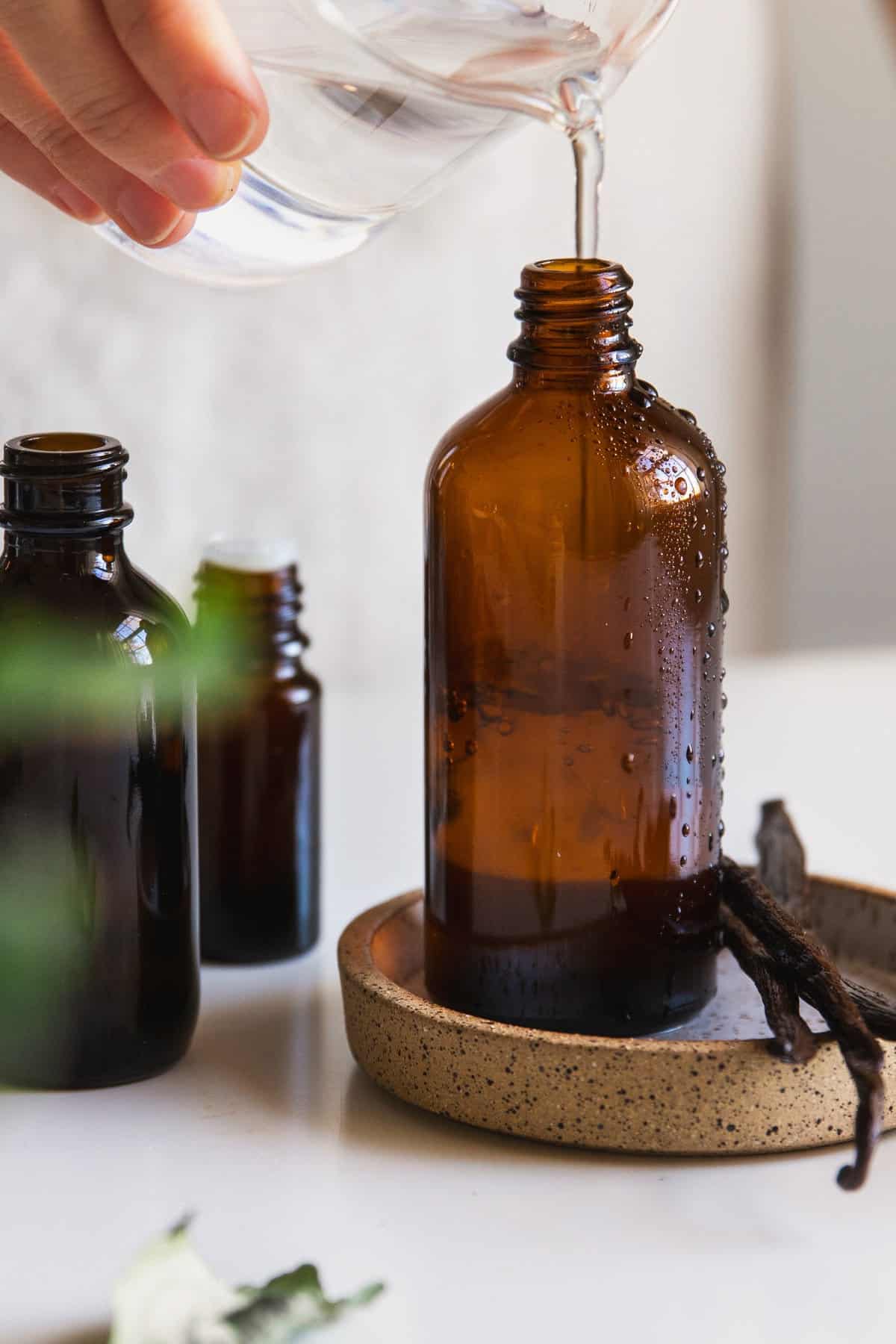
If you use enough essential oils, you won't end up with an overpowering alcohol scent when all's said and done (using perfumer's alcohol also helps with that). But you can always dilute the mixture with water at the end if needed.
- 2 oz high-proof alcohol, such as grain alcohol, vodka, or perfumer's alcohol
- 2 teaspoon vanilla essential oil
- Optional: 30-40 drops of complementary essential oils, such as lavender, bergamot, or jasmine
Instructions
- Combine the alcohol and essential oils in a glass spray bottle. Replace the cap and gently shake it to help disperse the oils.
- Place it in a cabinet to let it mature for 1-2 weeks.
- If you'd like a softer scent, dilute the perfume with a splash of water before using it (just don't go overboard it might mold). Use within 6 months.
3. Solid Vanilla Essential Oil Perfume
Solid perfume is a great thing to carry in your purse since it's pretty mess-free. For easy application, I use cardboard lip balm tubes or repurposed plastic lip balm containers so I can apply them quickly in a pinch. But you can always use small jars or cosmetic tins, too.
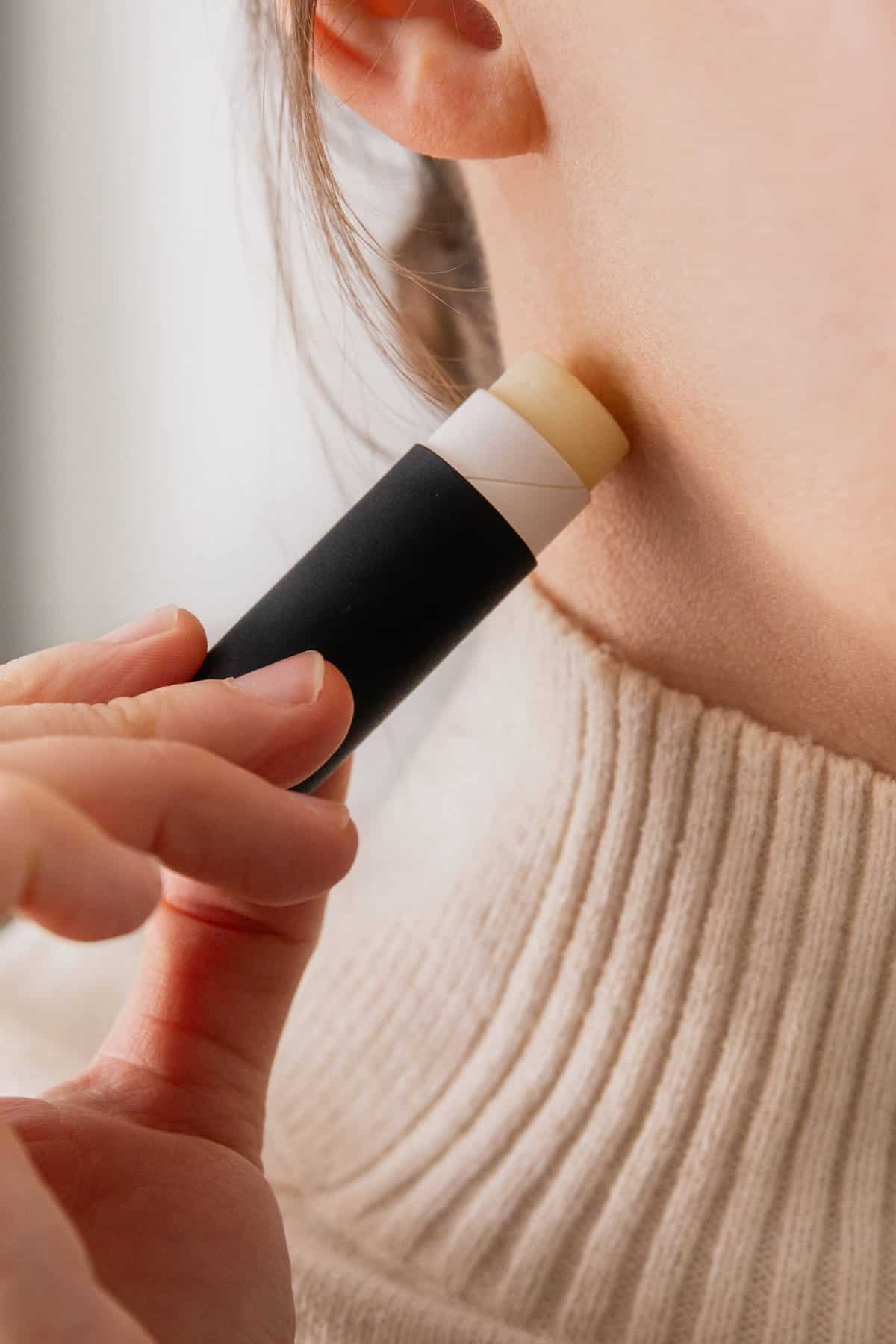
- 2 tablespoon beeswax (candelilla wax if you're vegan)
- 2 tablespoon apricot oil (or other carrier oil)
- 2-3 teaspoon vanilla essential oil
- Optional: 30-40 drops of complementary essential oils, such as lavender, bergamot, or jasmine
Instructions
- Combine the wax and carrier oil in a microwave-safe bowl, and microwave in 10-second intervals until just melted (stir often).
- Let the melted wax cool for 60 seconds before adding the essential oils. Stir again.
- Pour the perfume into containers and let cool completely before using.
4. Vanilla Extract Perfume
If you have a bottle of vanilla extract lying around, this perfume will be a cinch to make.
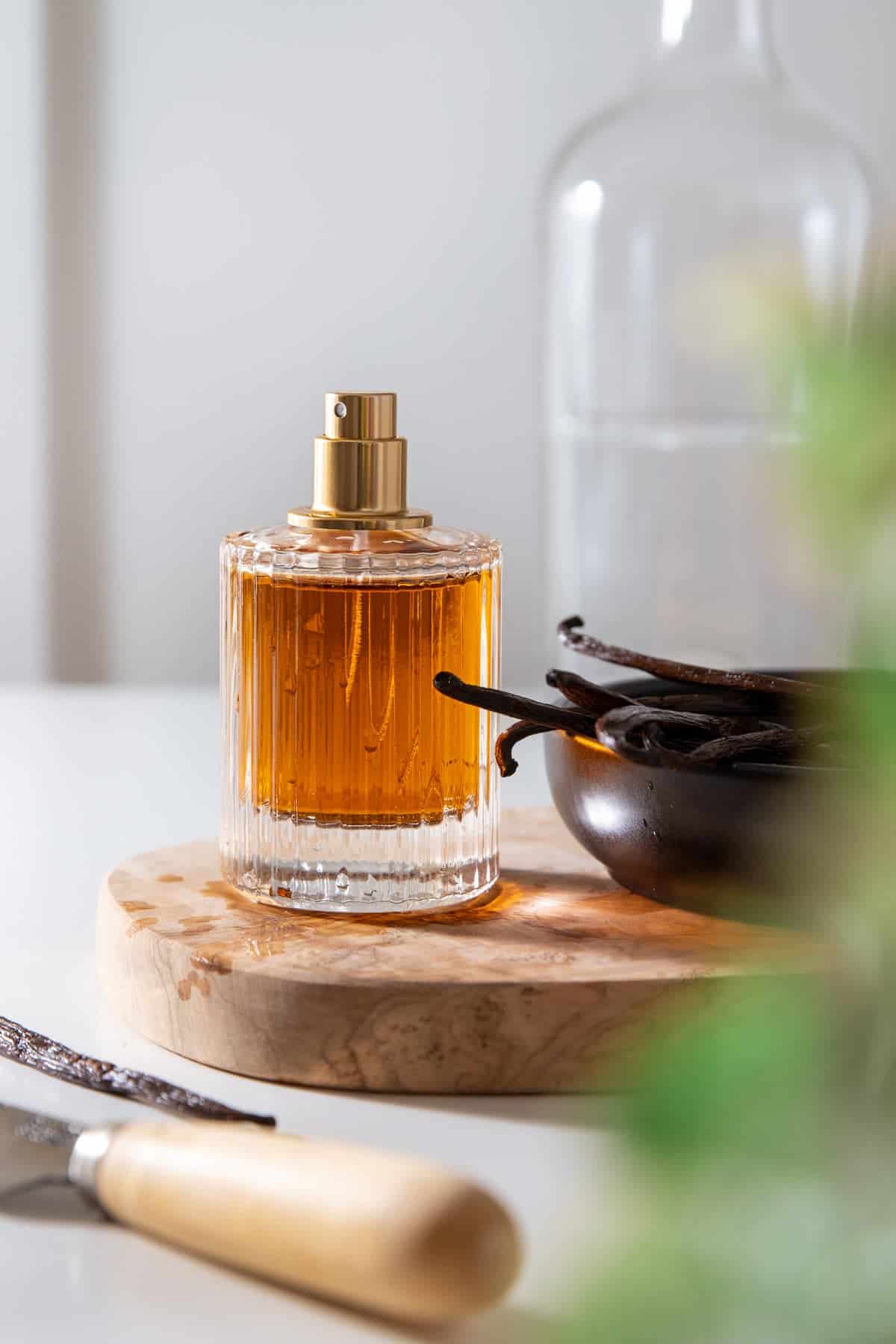
You don't need to add water, but it can help cut down on that "extract" scent a bit. Adding oils also helps make it smell more like a perfume. Use it within 1-2 weeks or add a preservative and use it within a year.
- 2 oz high-quality vanilla extract
- 2 oz distilled water
- Optional: 30-40 drops of complementary essential oils, such as lavender, bergamot, or jasmine
- 1 teaspoon Leucidal Liquid preservative
Instructions
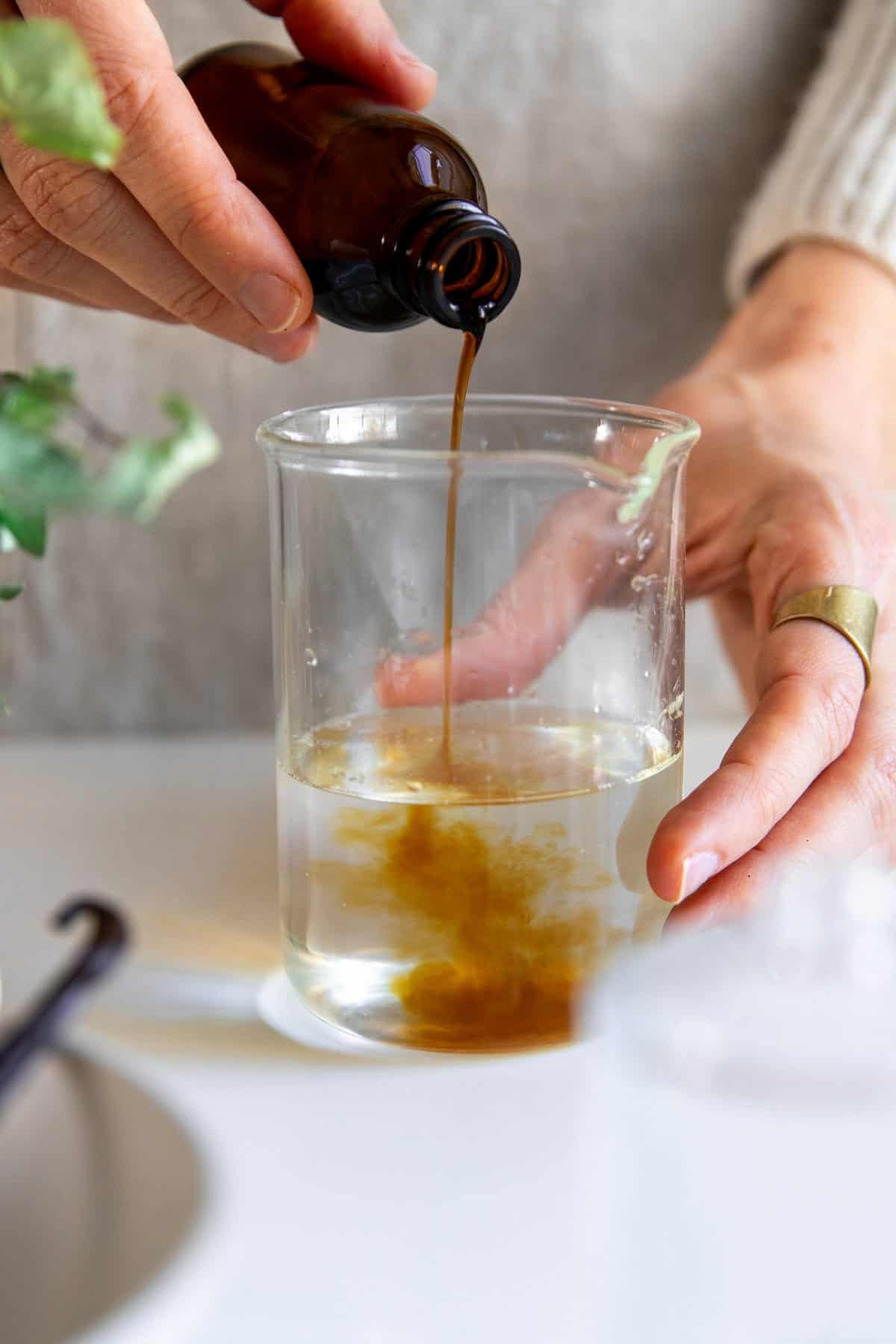
Step 1 | Mix vanilla extract with water
In a measuring cup or small bowl, combine the vanilla extract and distilled water. Swirl to combine.
Test the perfume on your skin, and add more vanilla extract or water as needed until you reach your ideal fragrance.
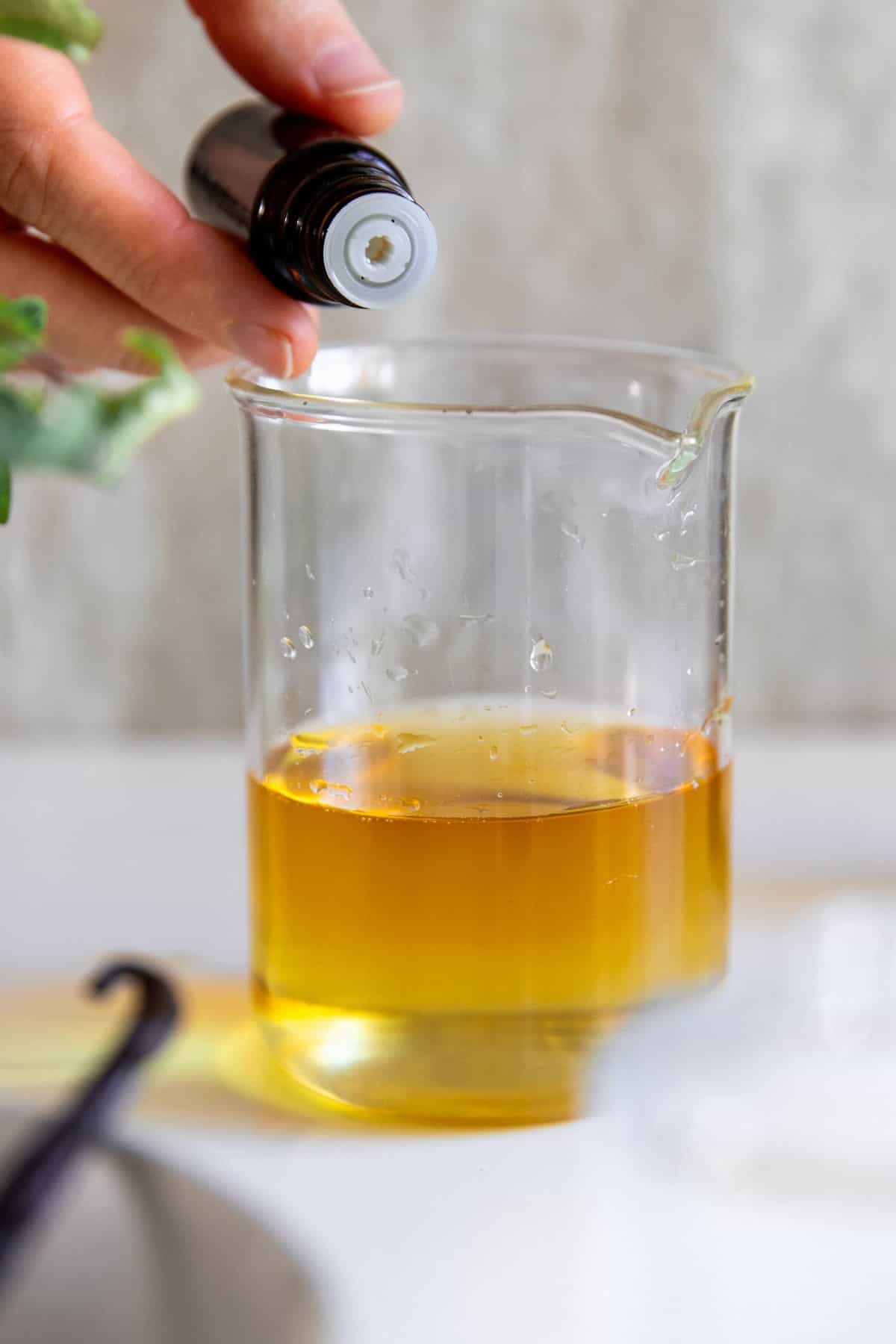
Step 2 | Add essential oils
Add 30-40 drops of essential oil and swirl again. Test and revise until you reach your ideal scent.
If you're using a preservative, go ahead and add it now.
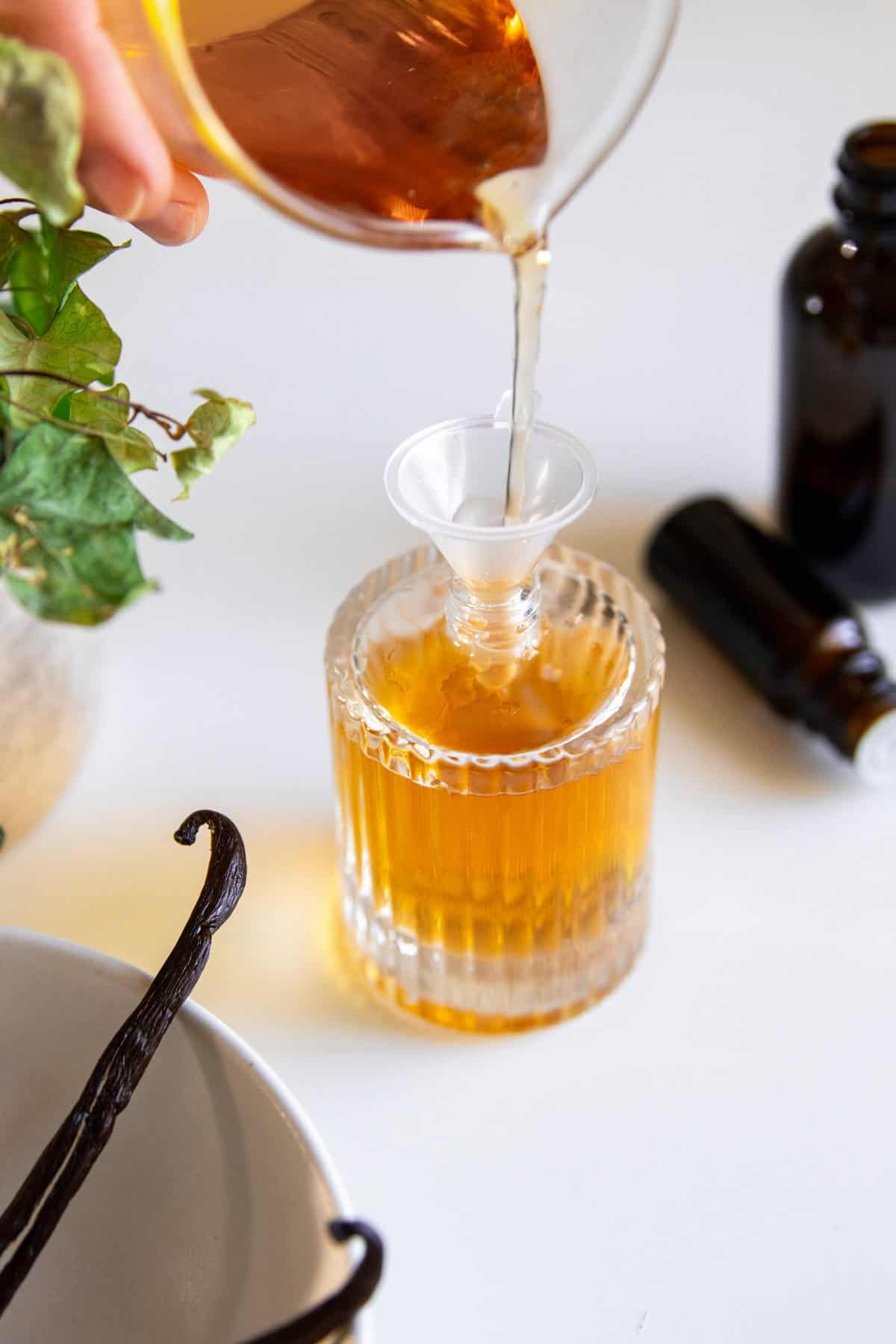
Step 3 | Transfer to a bottle
Using a small funnel, transfer the perfume to a perfume bottle or mister bottle.
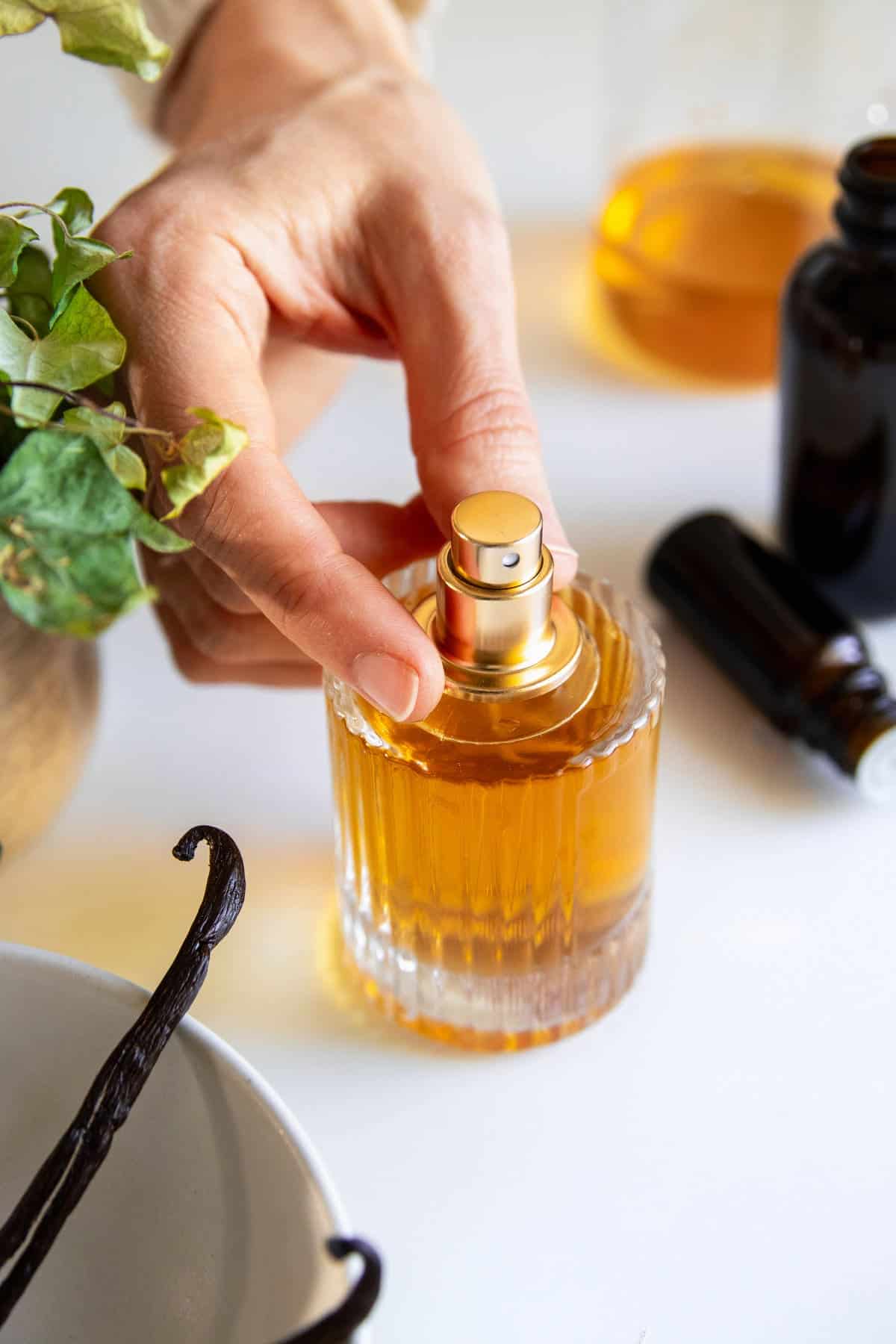
Step 4 | Replace the cap and shake
Shake the perfume before each use to disperse the oils.
5. Vanilla Roll-On Perfume
Regular perfumes often contain alcohol and other skin-aggravating ingredients, but this DIY gem relies on a touch of light almond oil and skin-soothing glycerin for its delivery.
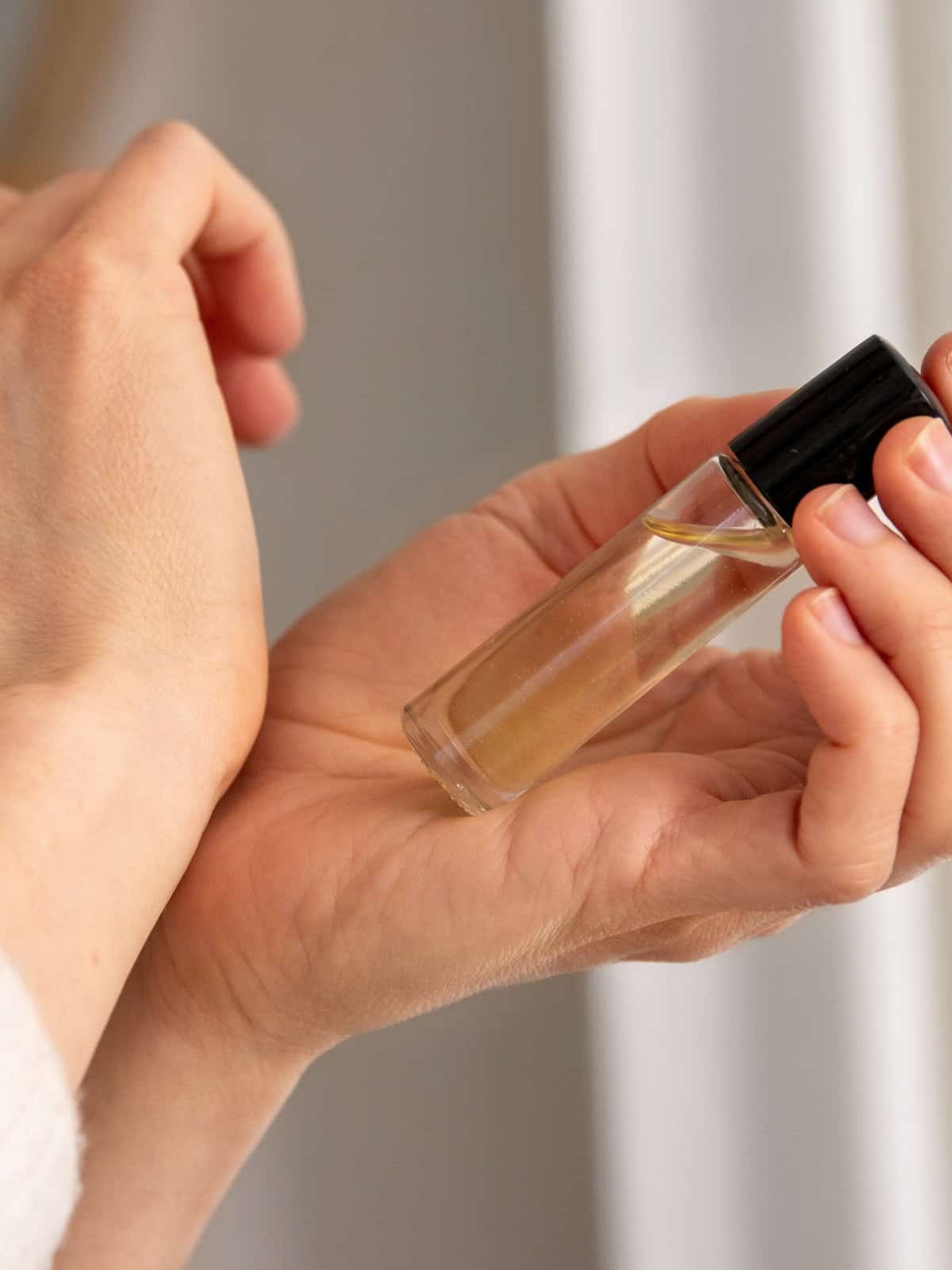
Instead of drying and irritating your skin, roll-on perfume moisturizes and soothes, all while making you smell delightful, of course.
- 1 teaspoon vanilla essential oil
- 2 teaspoon vegetable glycerin
- 1 tablespoon sweet almond oil
- Optional: 30-40 drops of complementary essential oils, such as lavender, bergamot, or jasmine
Instructions
- Mix the vanilla essential oil, glycerin, and almond oil in a small bowl. Add the optional essential oils for complexity, or skip them if you'd prefer to keep things simple.
- Store in a roll-on perfume bottle and use within a year.
Love the scent of vanilla? Try this Vanilla Clove Body Oil Spray recipe.
FAQ
Yes, you can use vanilla extract from the kitchen, but keep in mind that it contains alcohol and water, which may affect the longevity and scent of your perfume. It's generally recommended to use vanilla essential oil for a more concentrated and stable fragrance.
Vanilla essential oil is extracted from vanilla beans and is considered a natural ingredient. Vanilla fragrance oil is synthetic and is created to mimic the scent of vanilla. While both can be used in perfume-making, some prefer the authenticity of vanilla essential oil.
Absolutely! Vanilla blends well with many other scents such as floral notes (like jasmine or lavender), citrus notes (like orange or lemon), or woody notes (like sandalwood or cedar). Experimenting with different combinations can yield unique and appealing fragrances.
The longevity of your homemade vanilla perfume depends on various factors such as the quality of ingredients used, the concentration of fragrance oils, and individual body chemistry. Generally, alcohol-based perfumes tend to last longer than oil-based ones.
Store your homemade perfume in a cool, dark place away from direct sunlight and extreme temperatures. Using dark glass bottles can help protect the fragrance from light degradation.
Here are more ways to make your perfume last.

